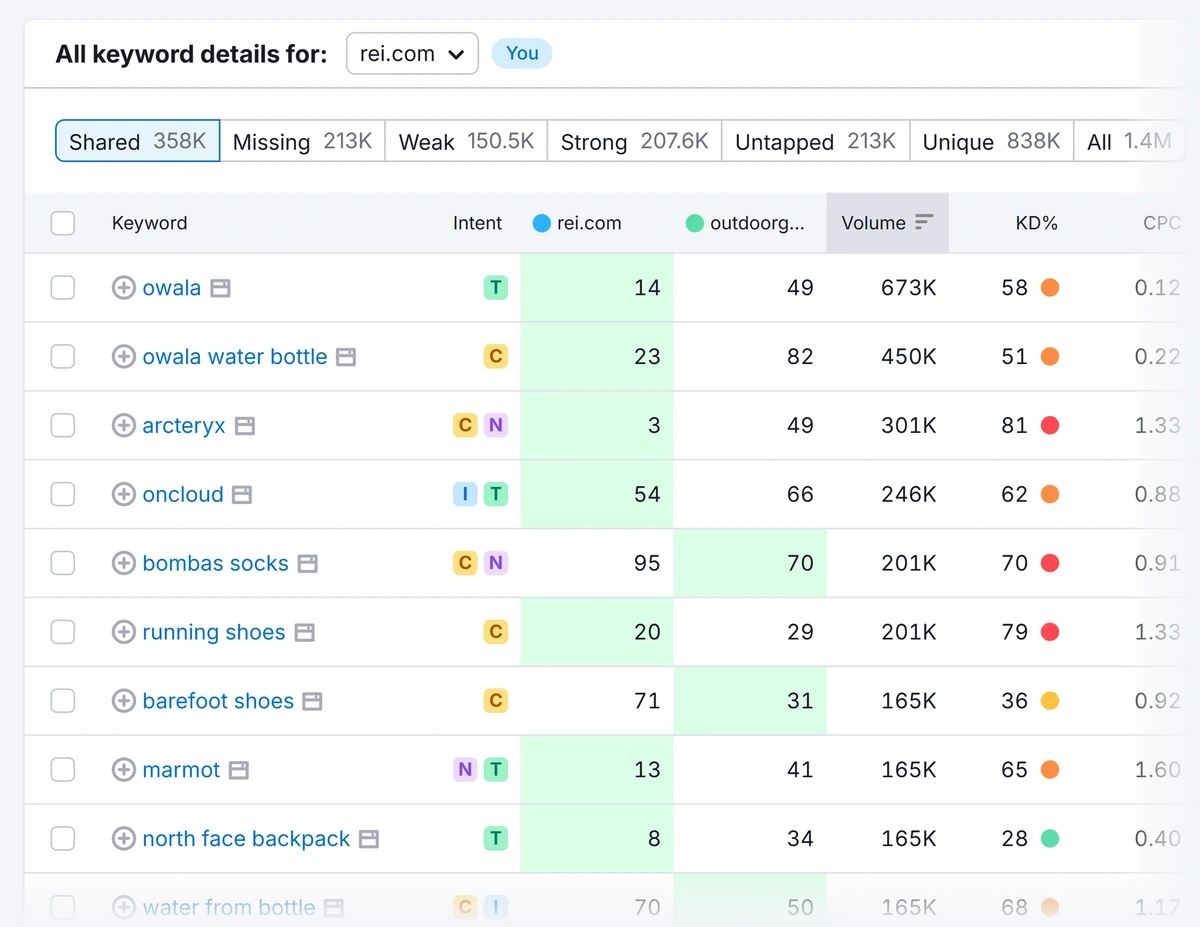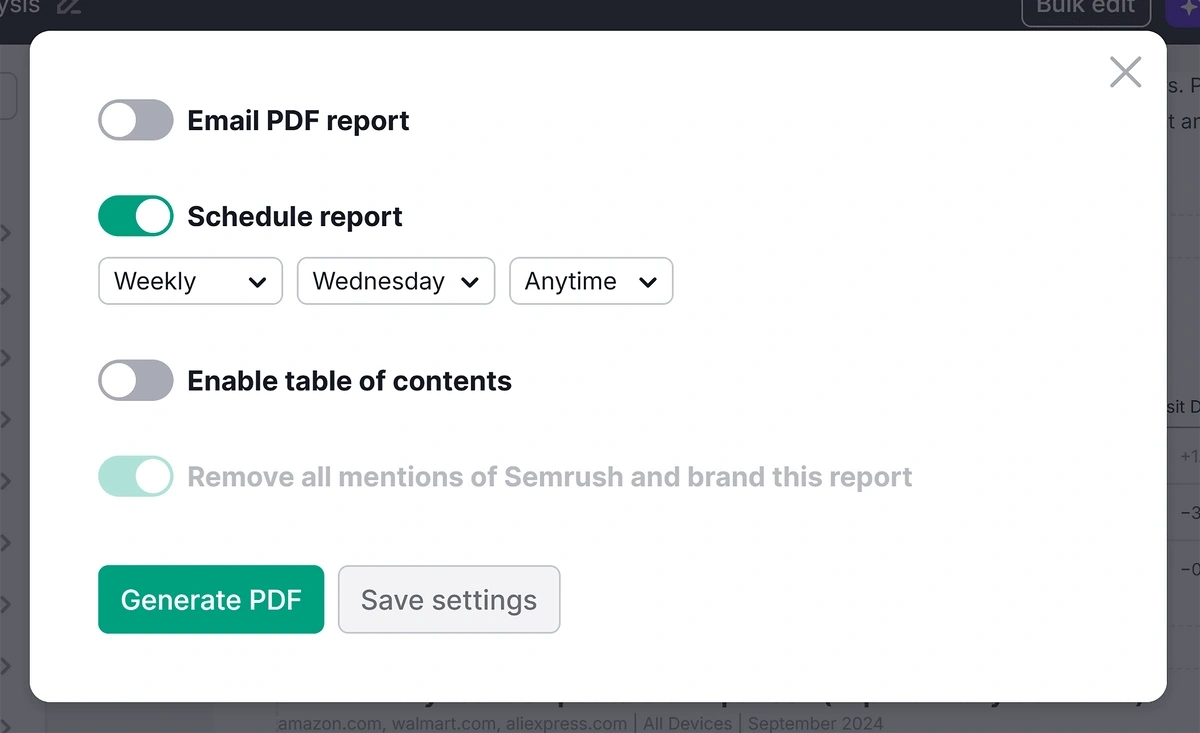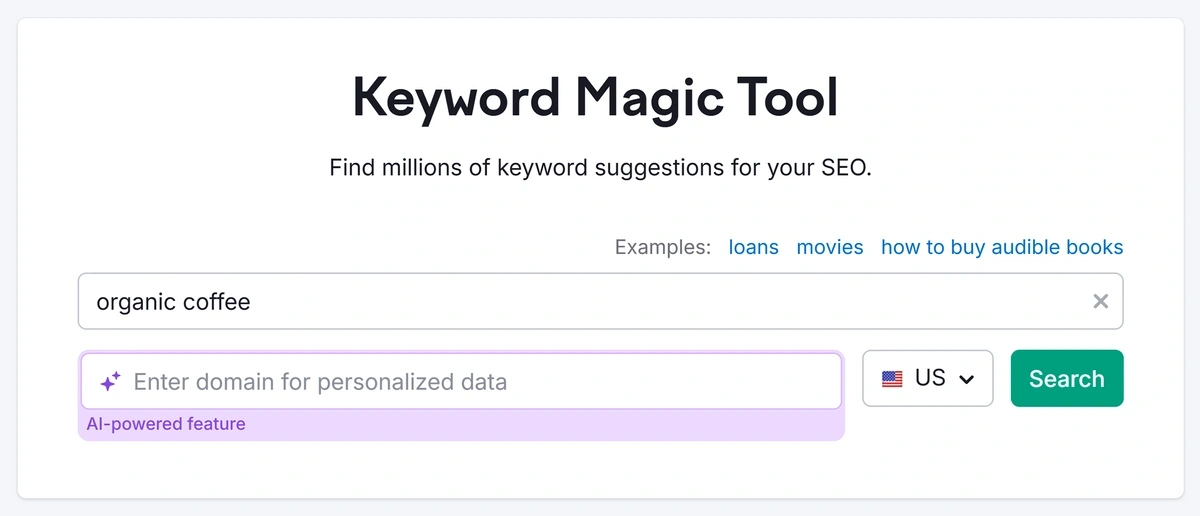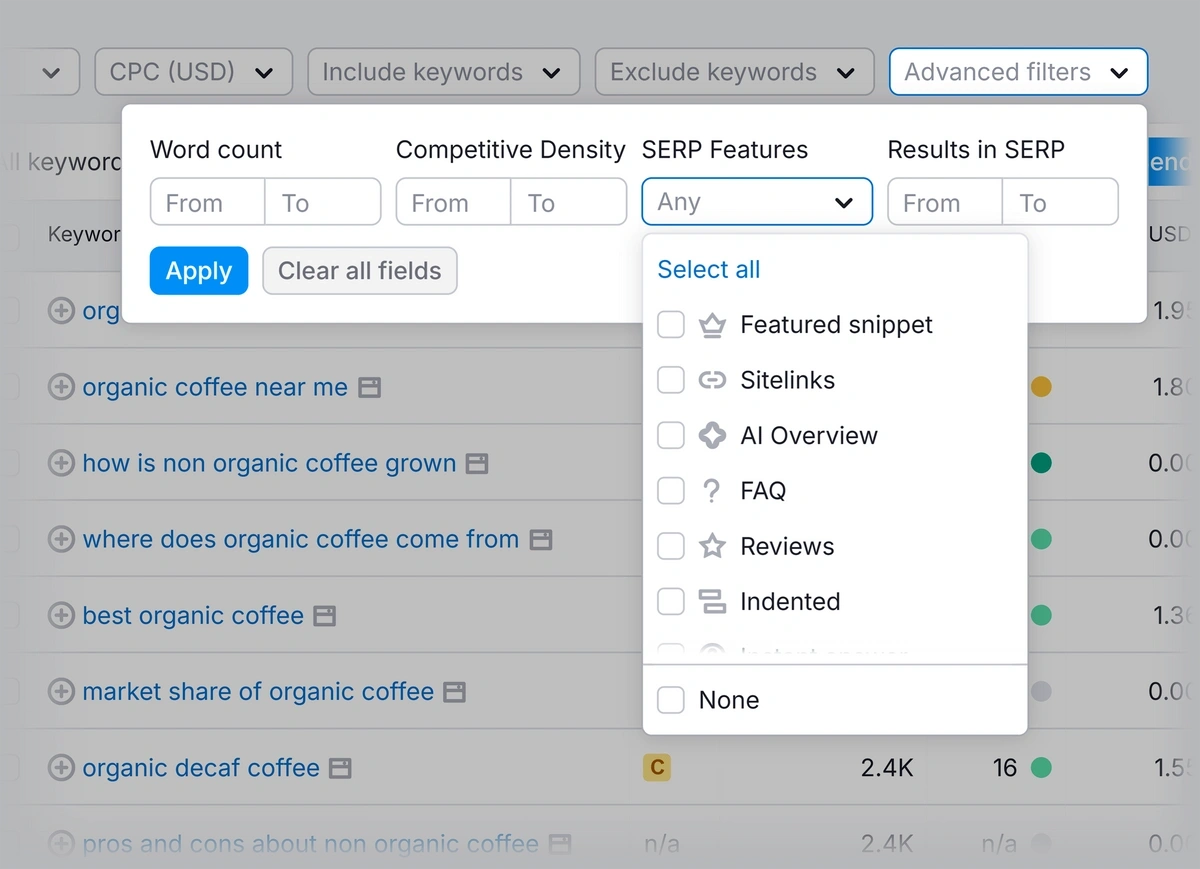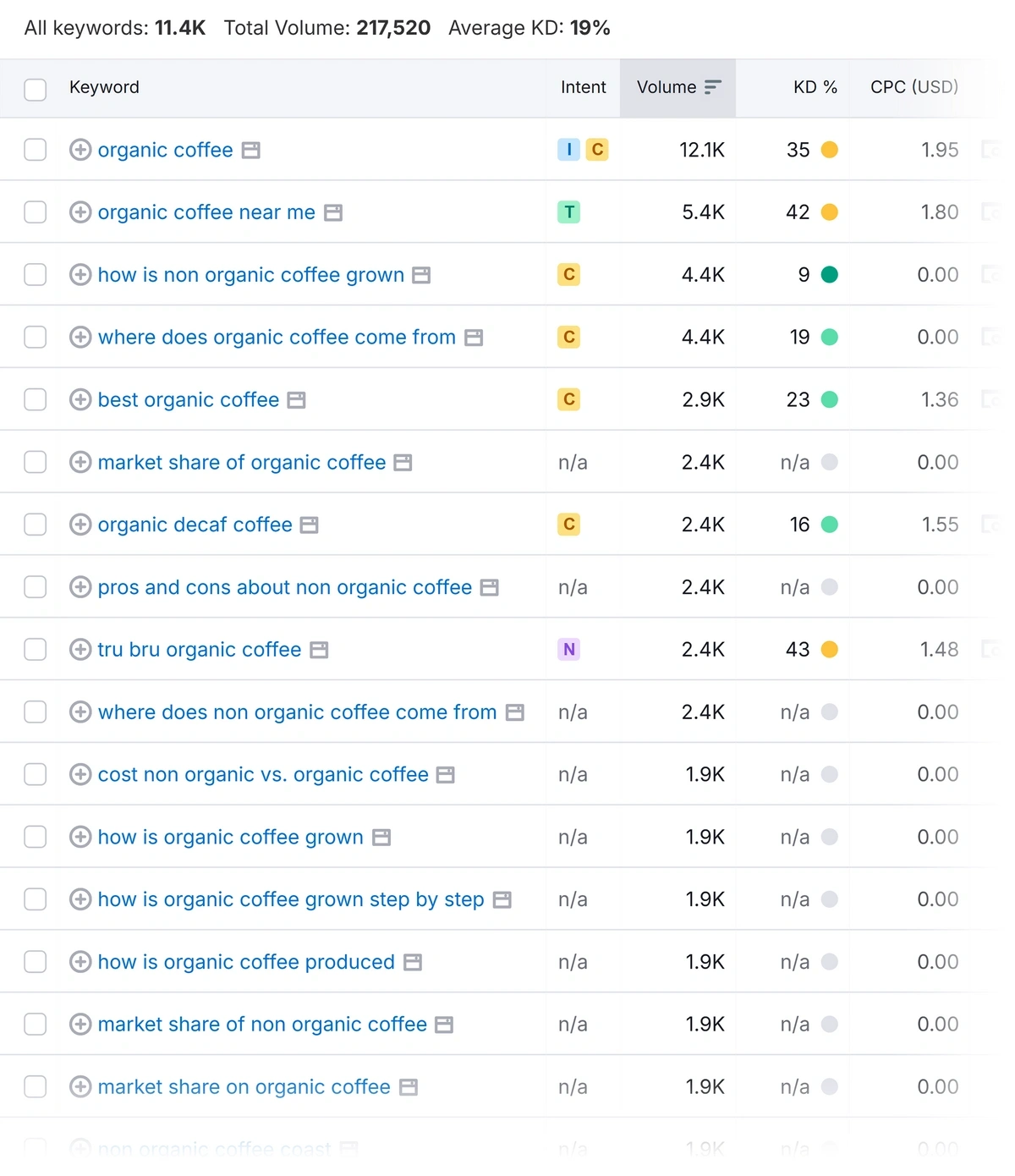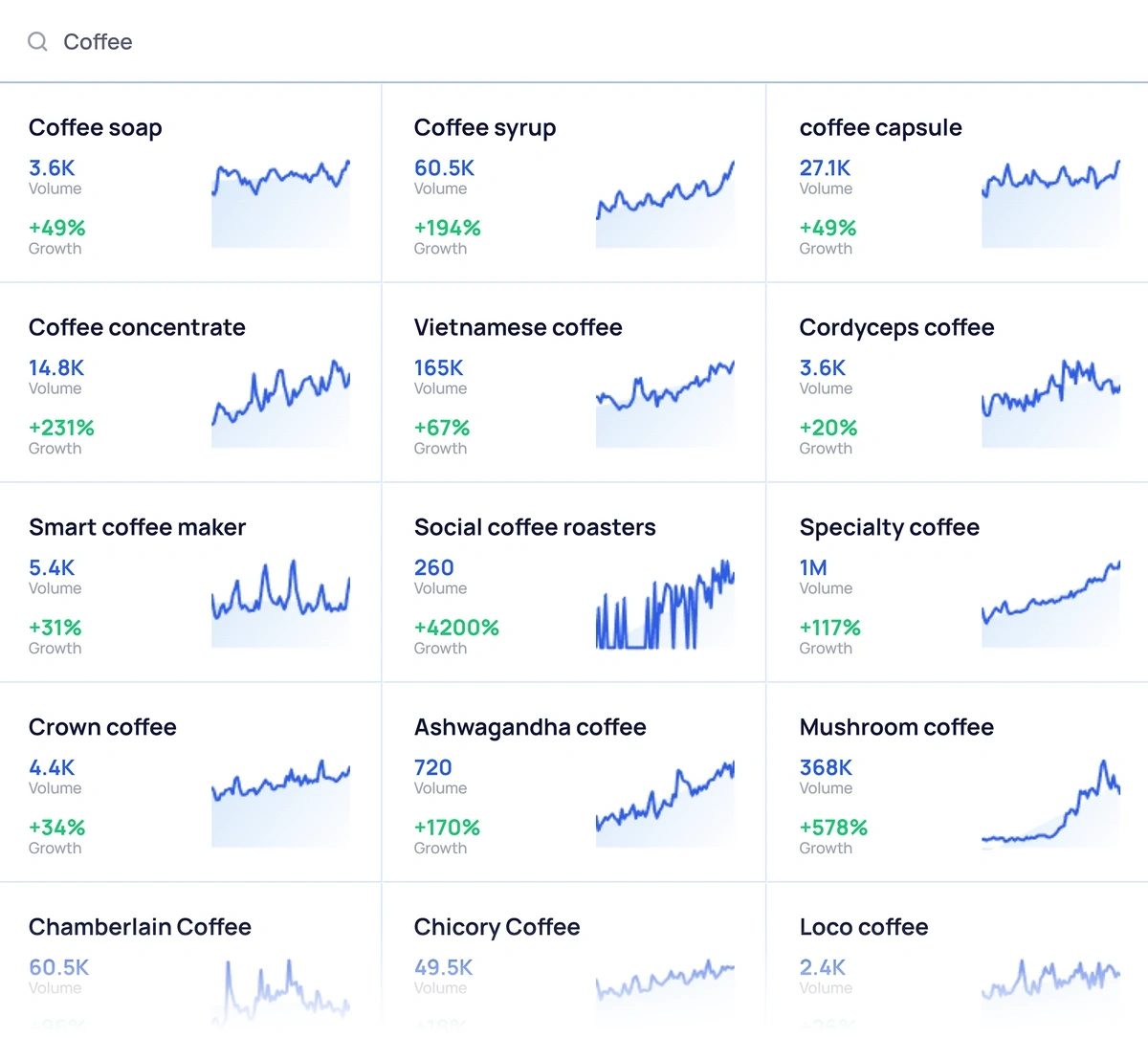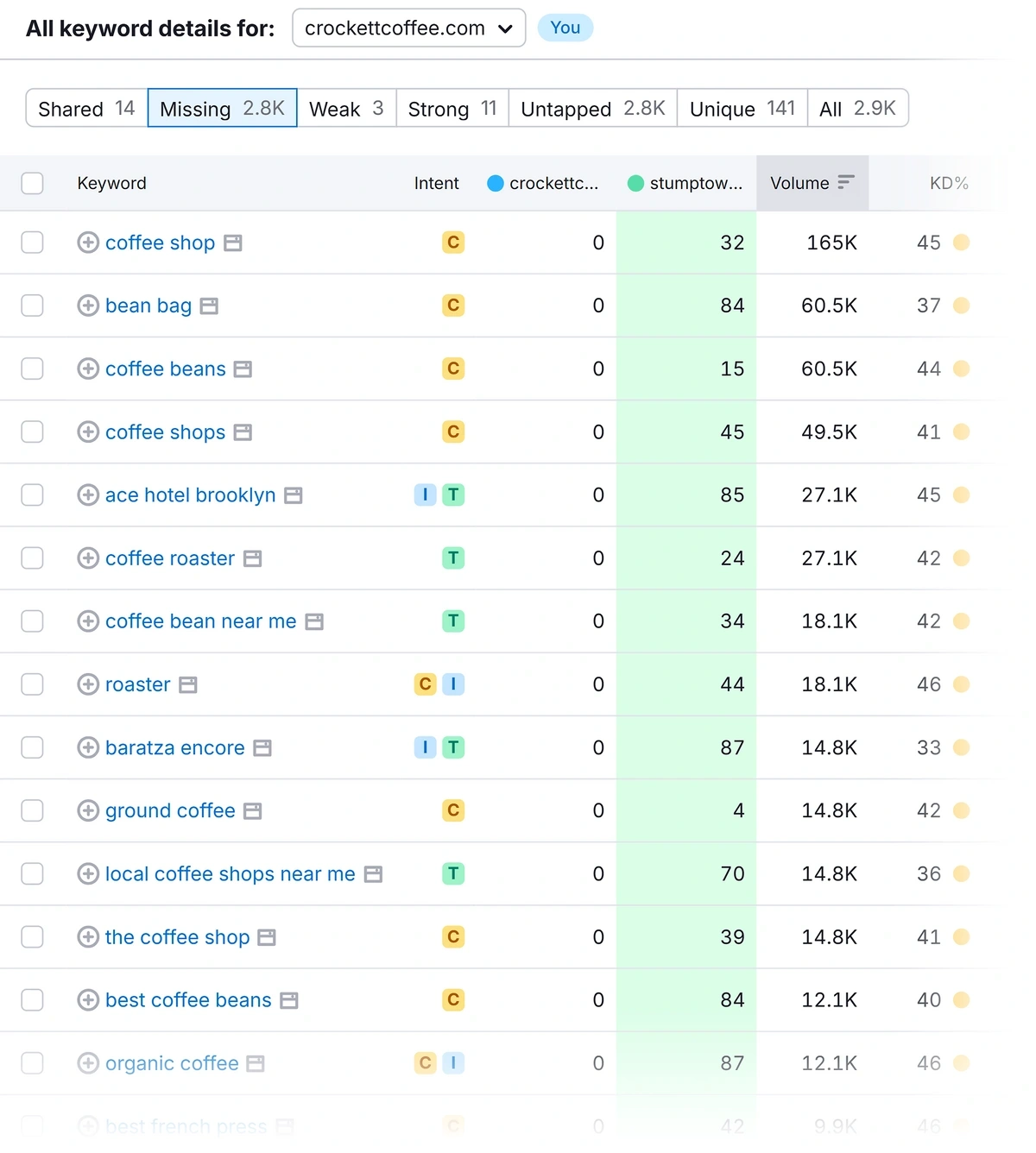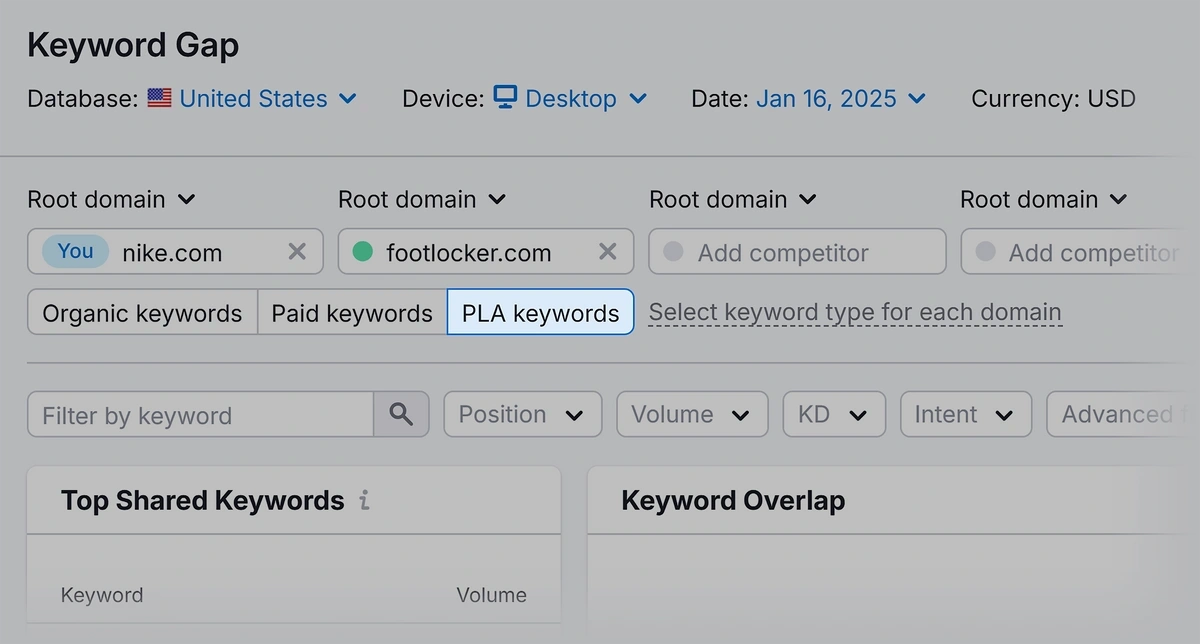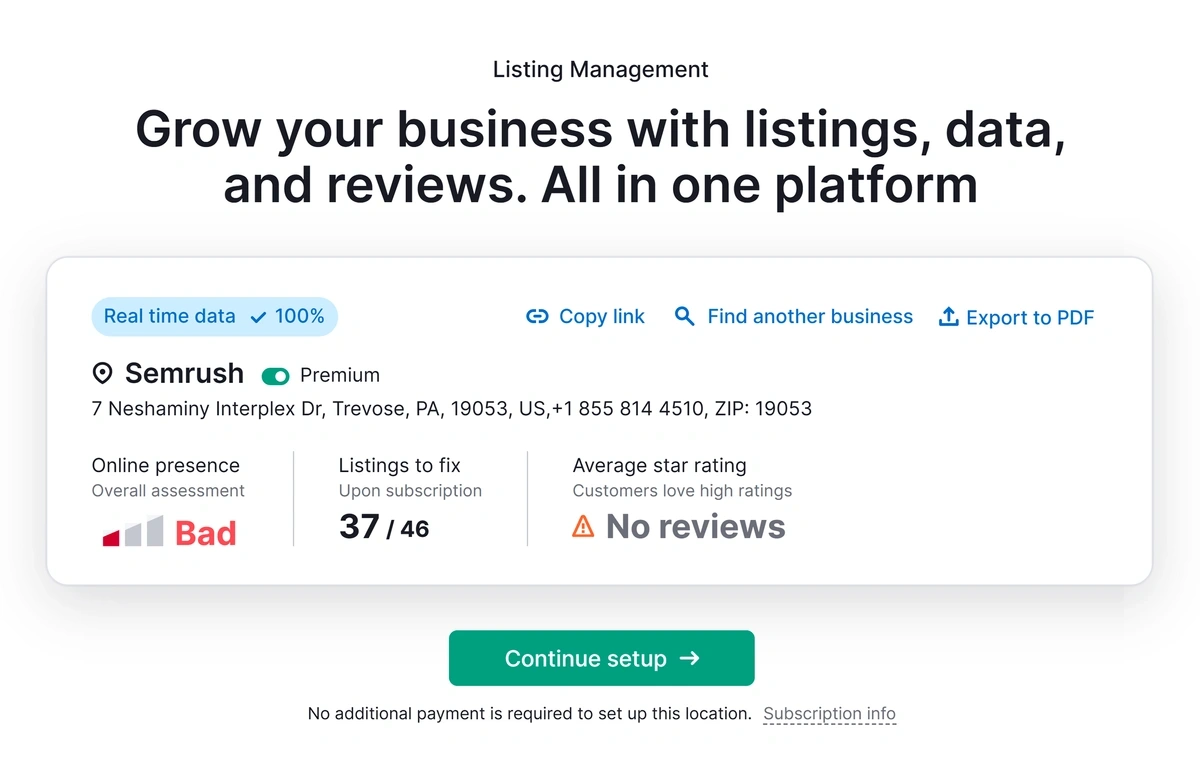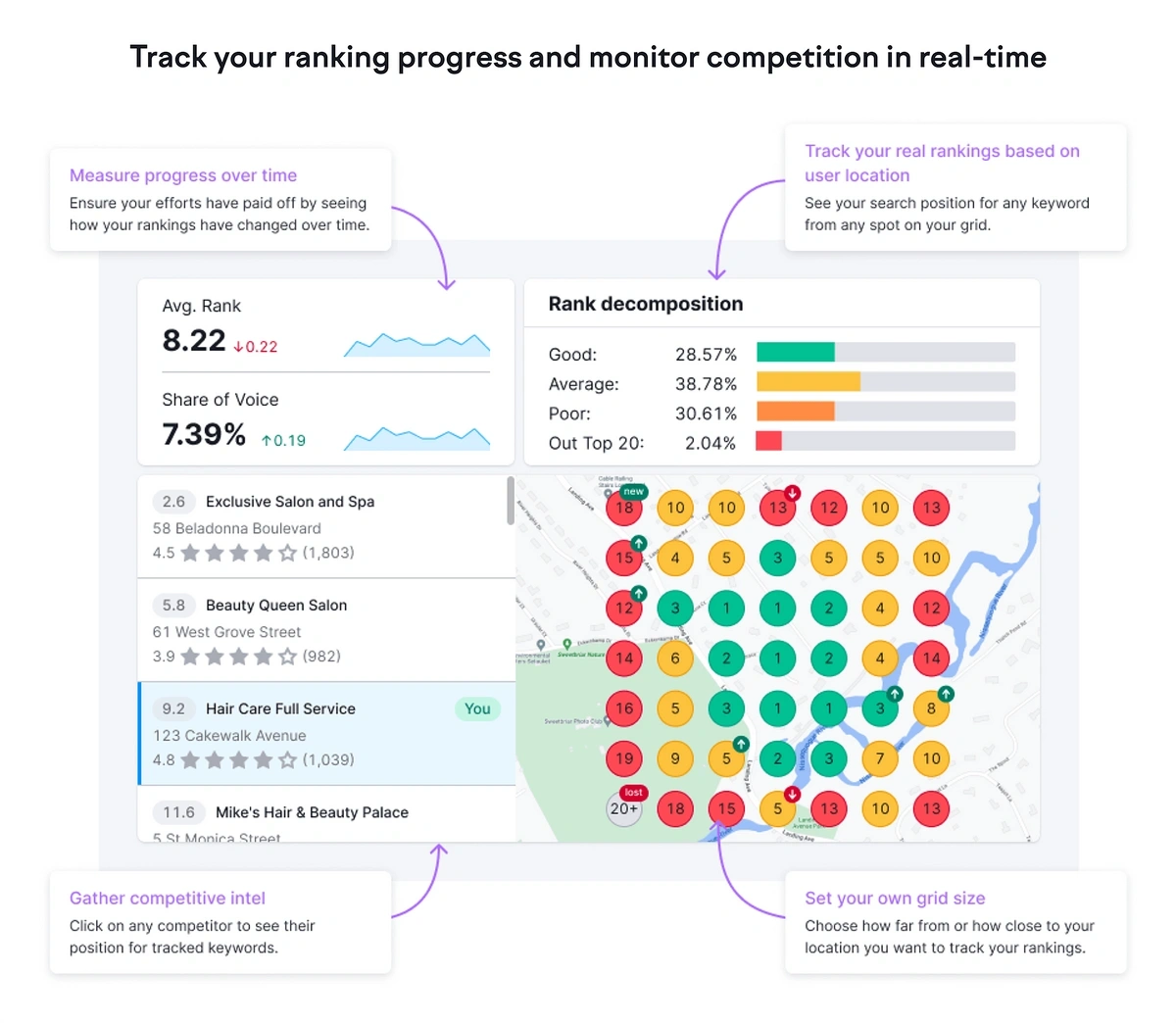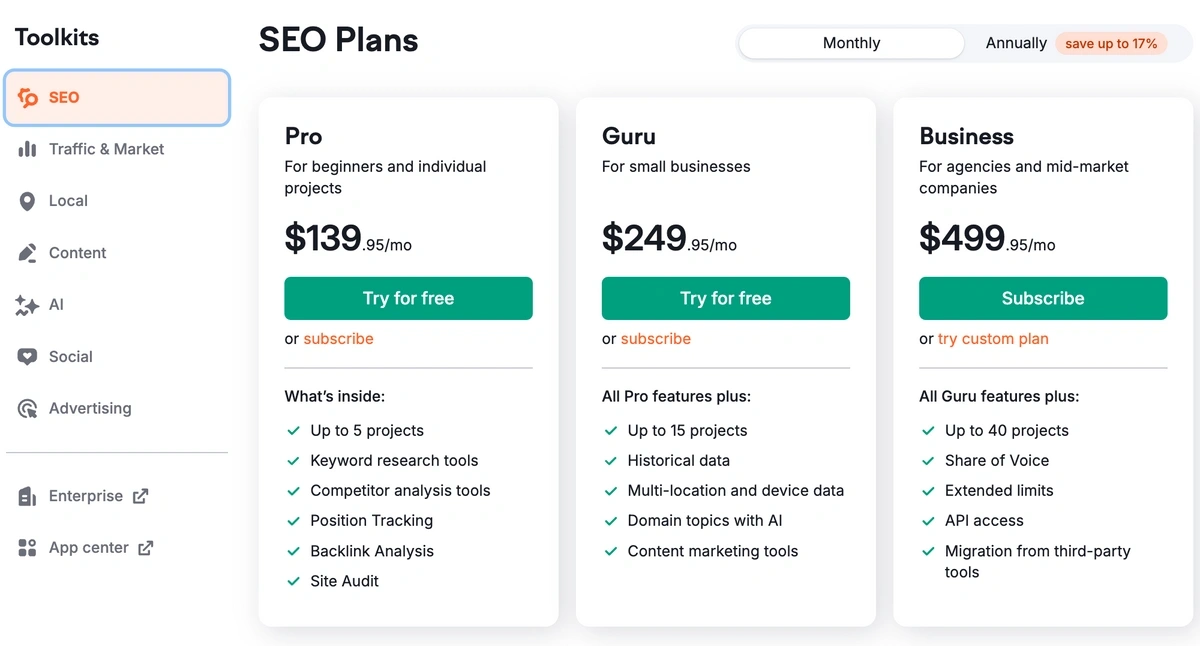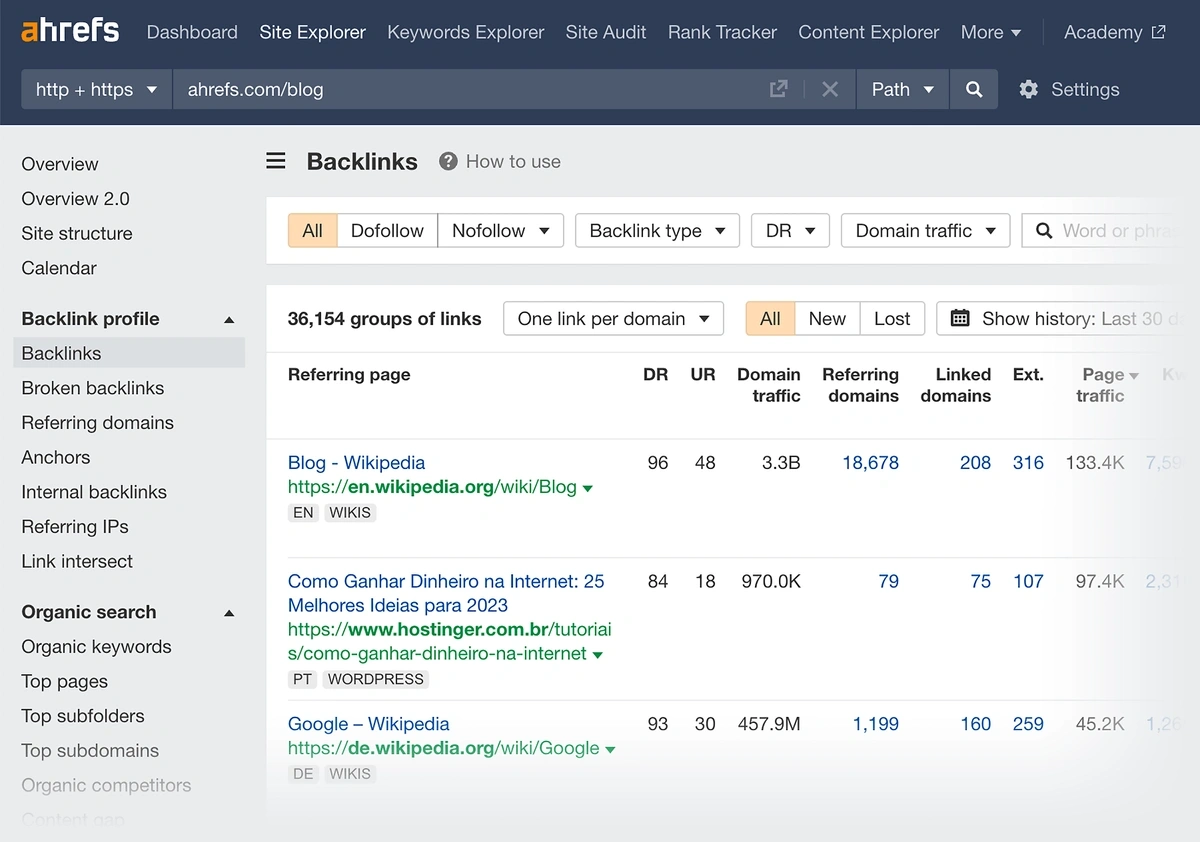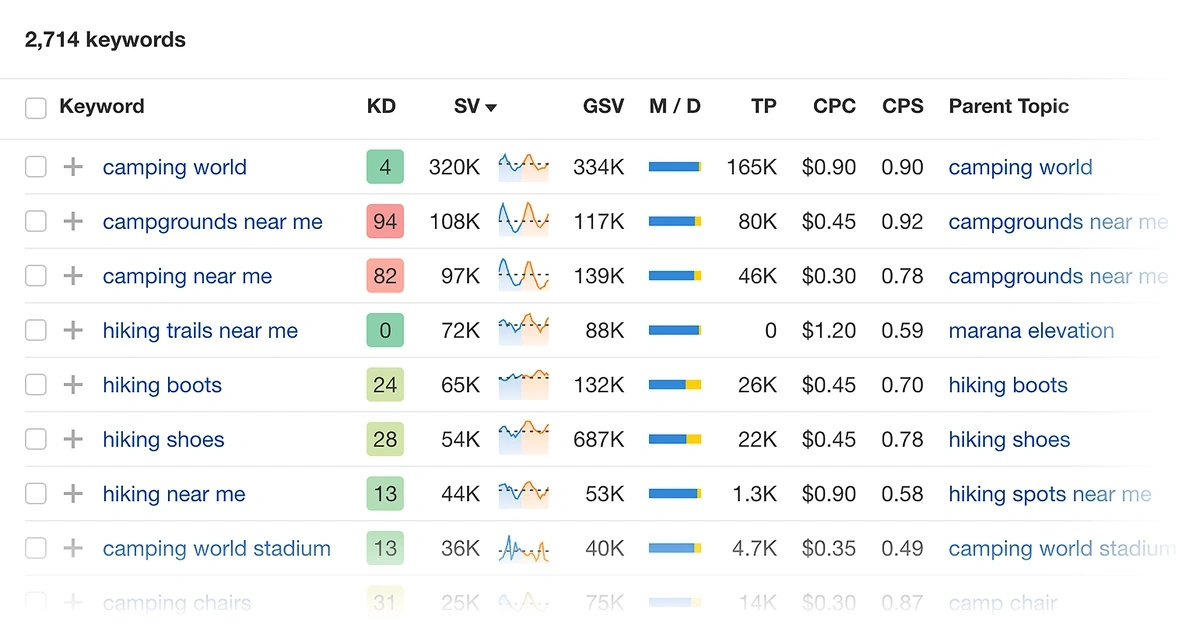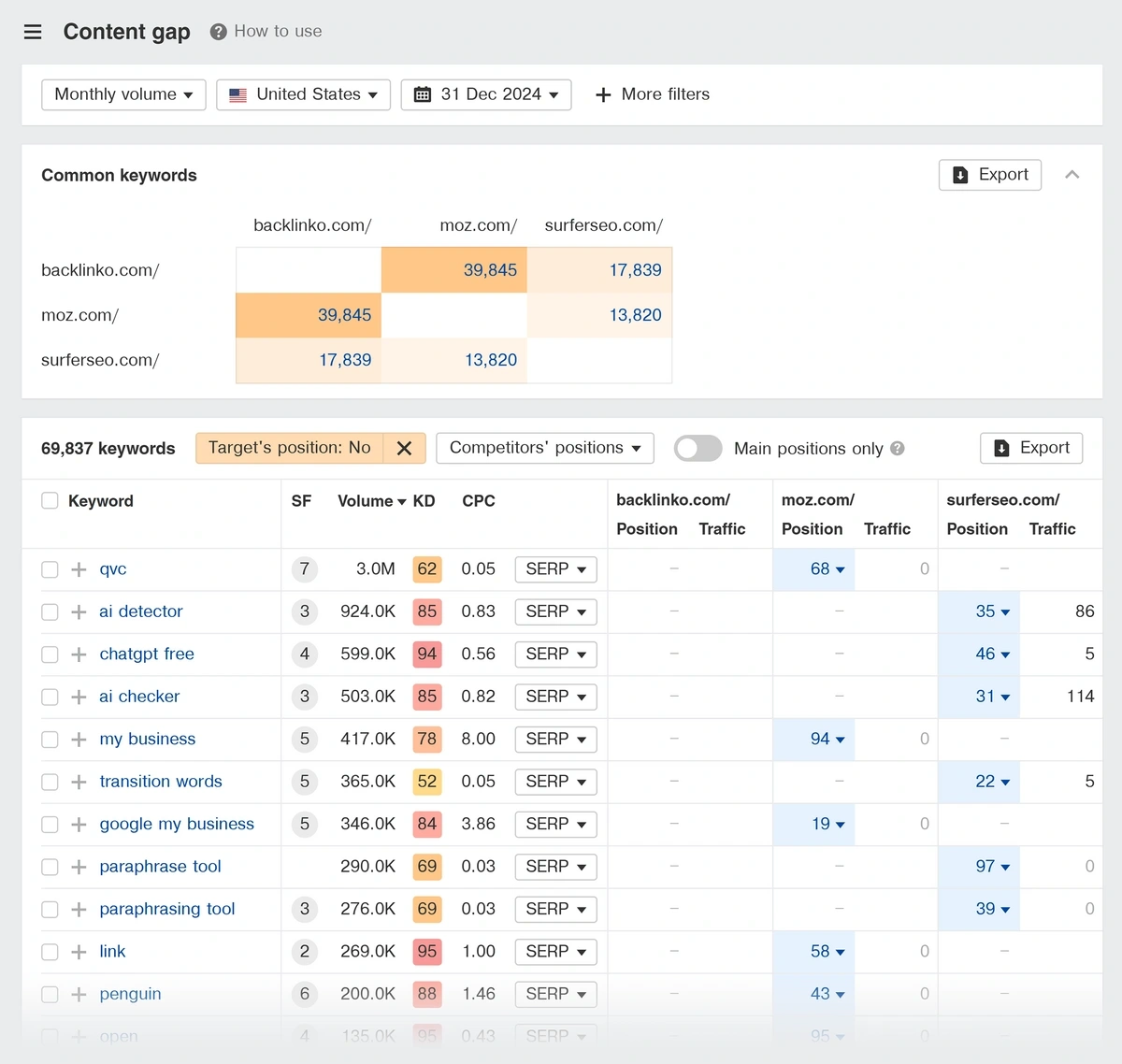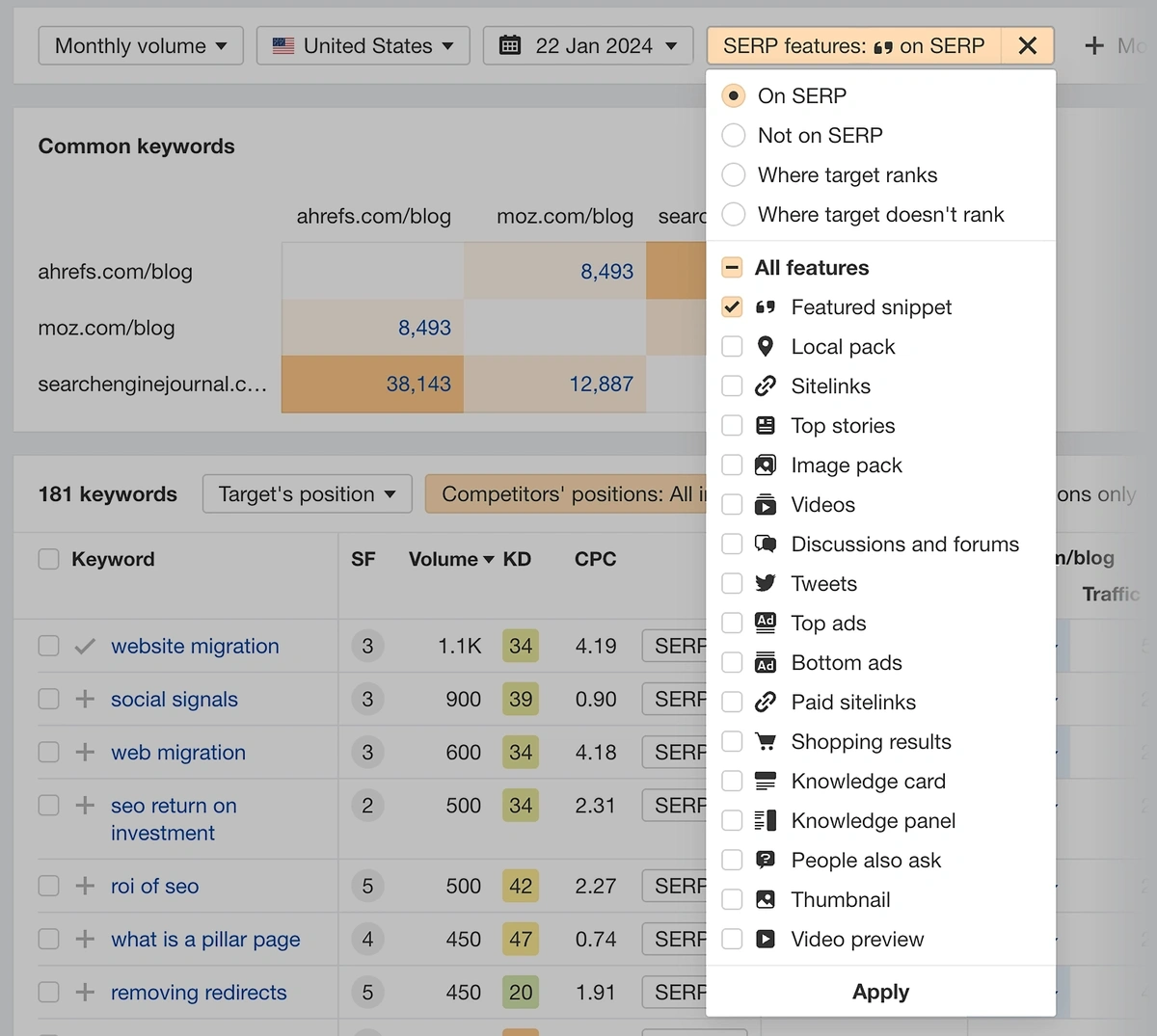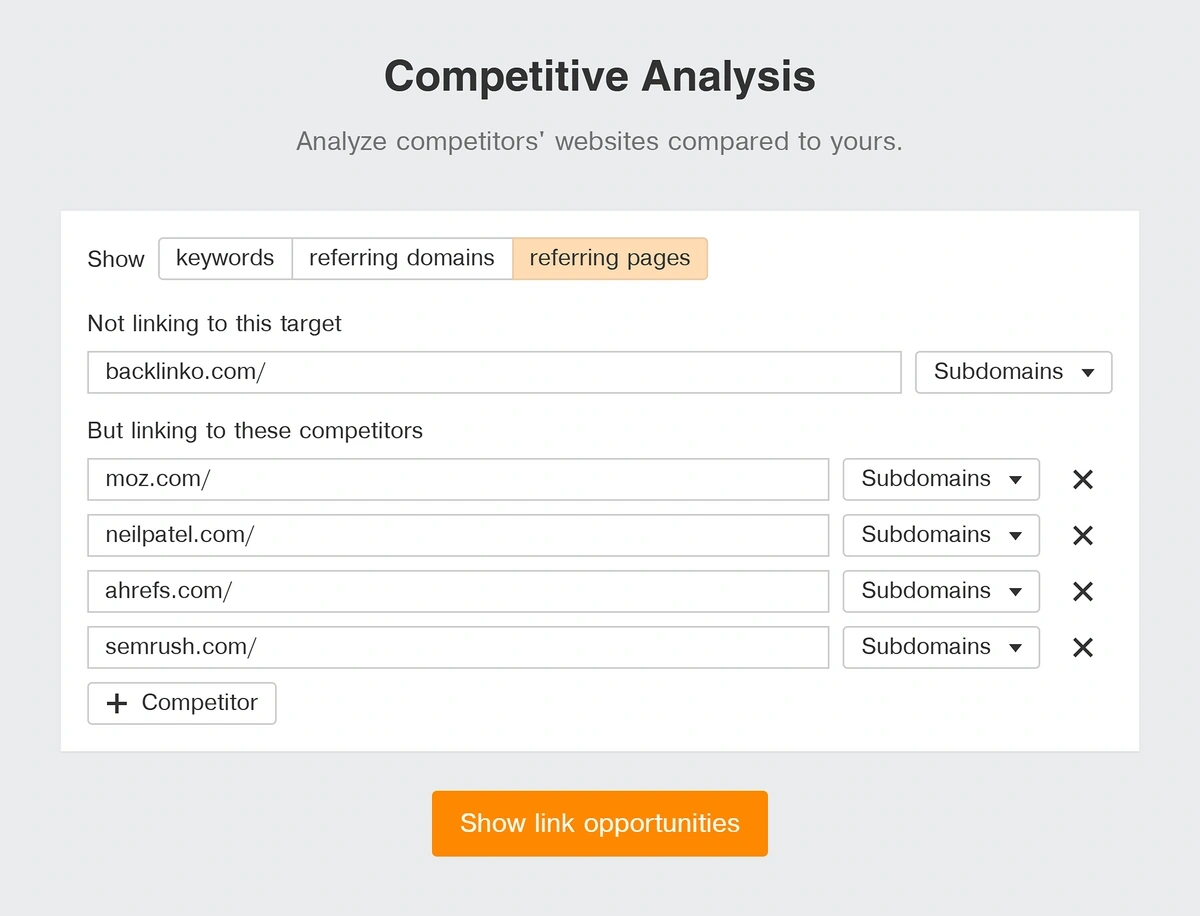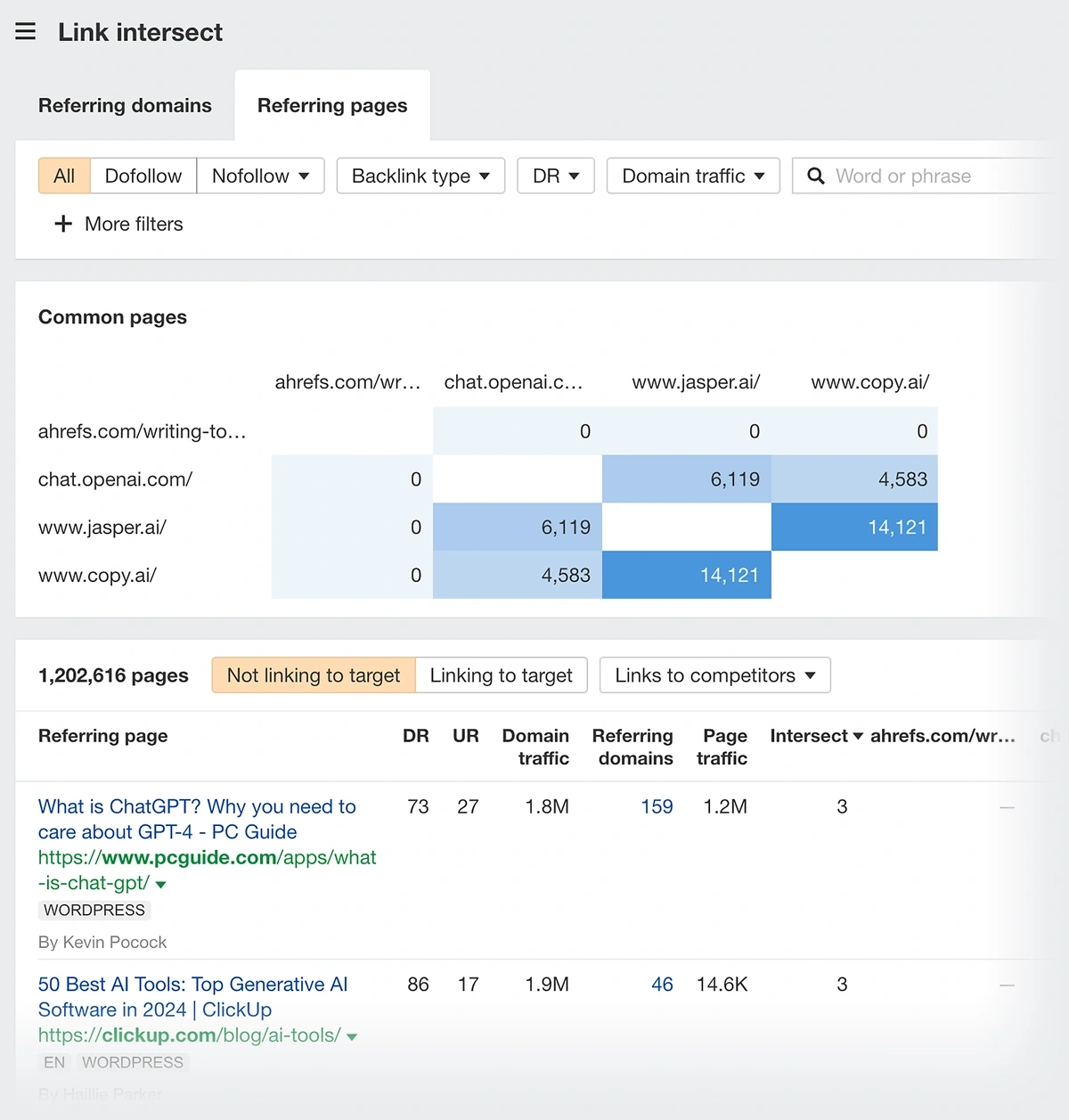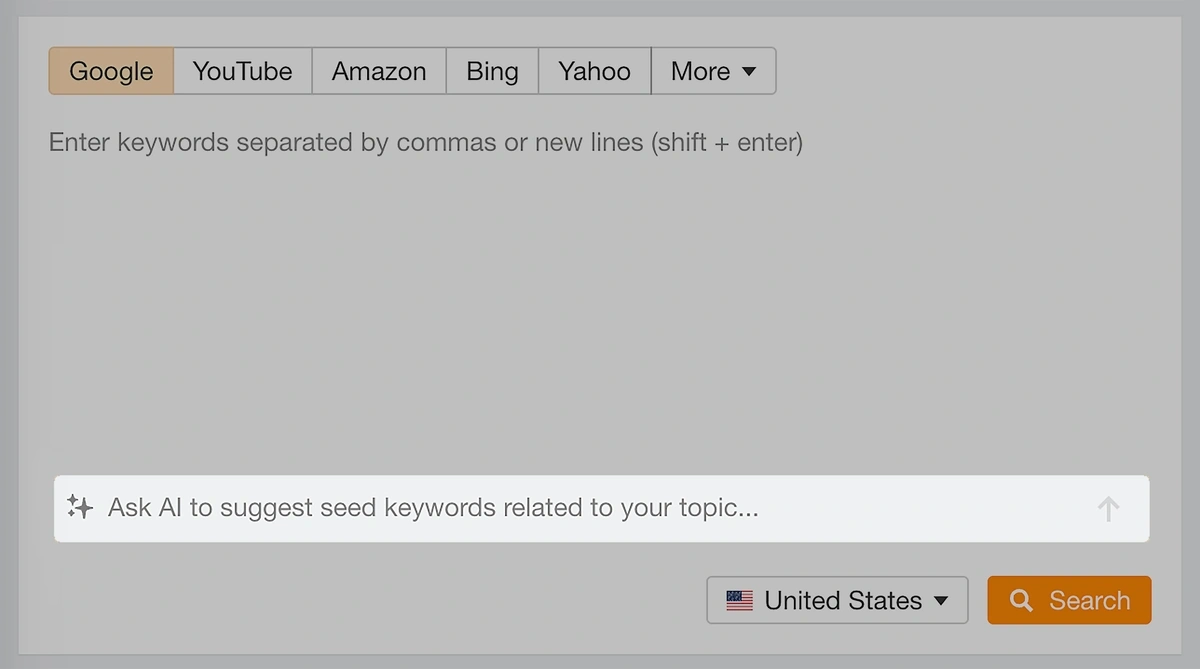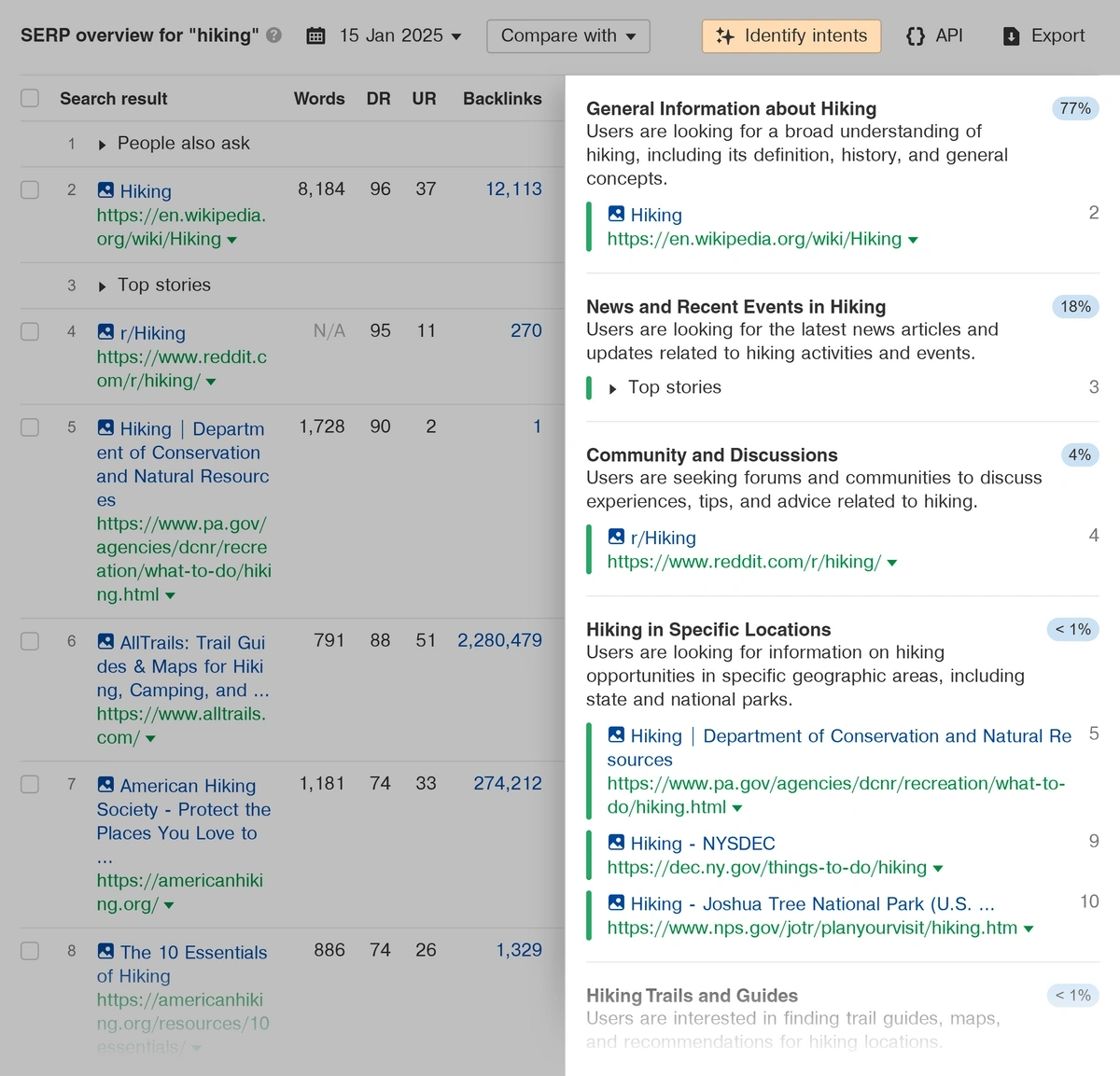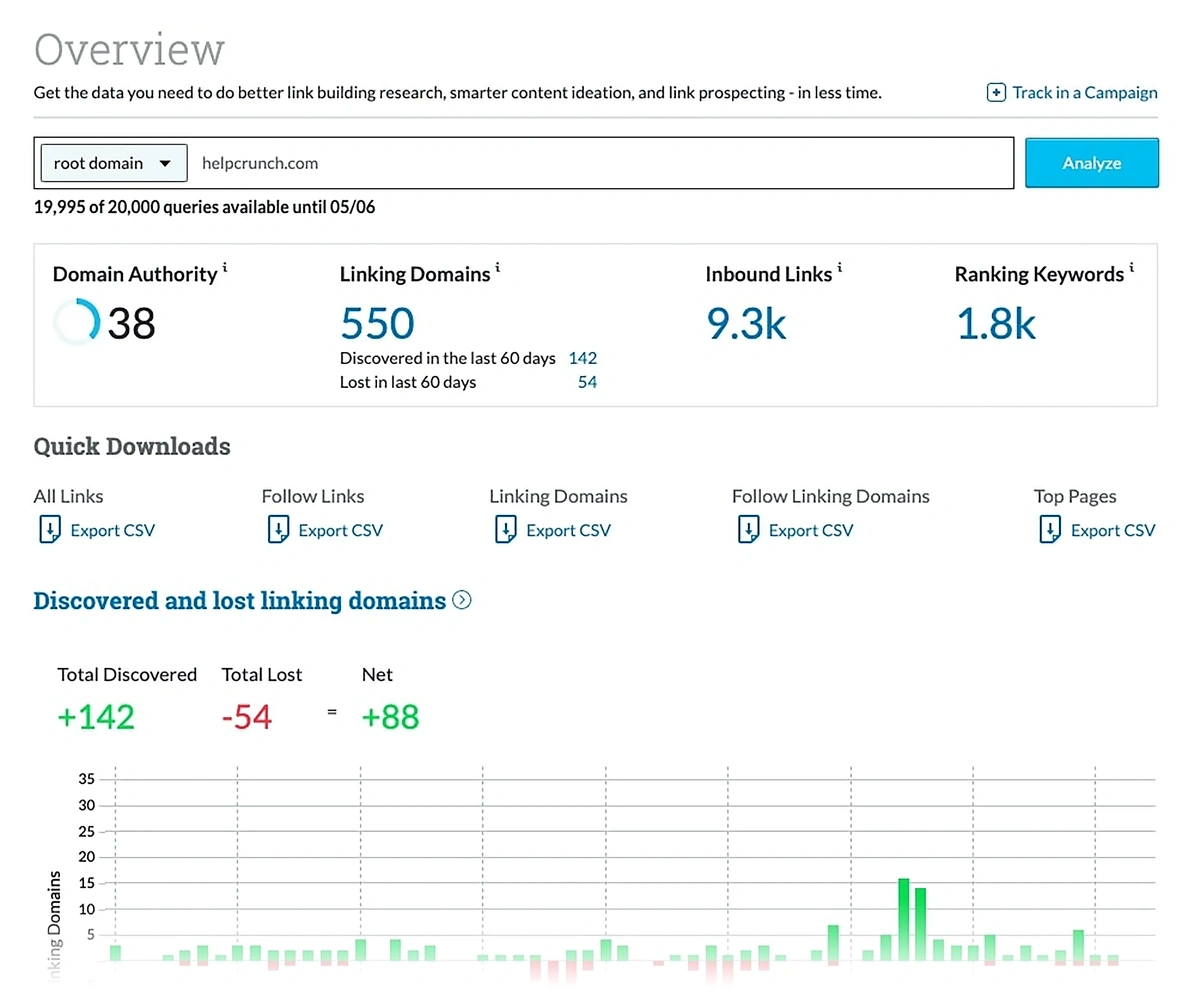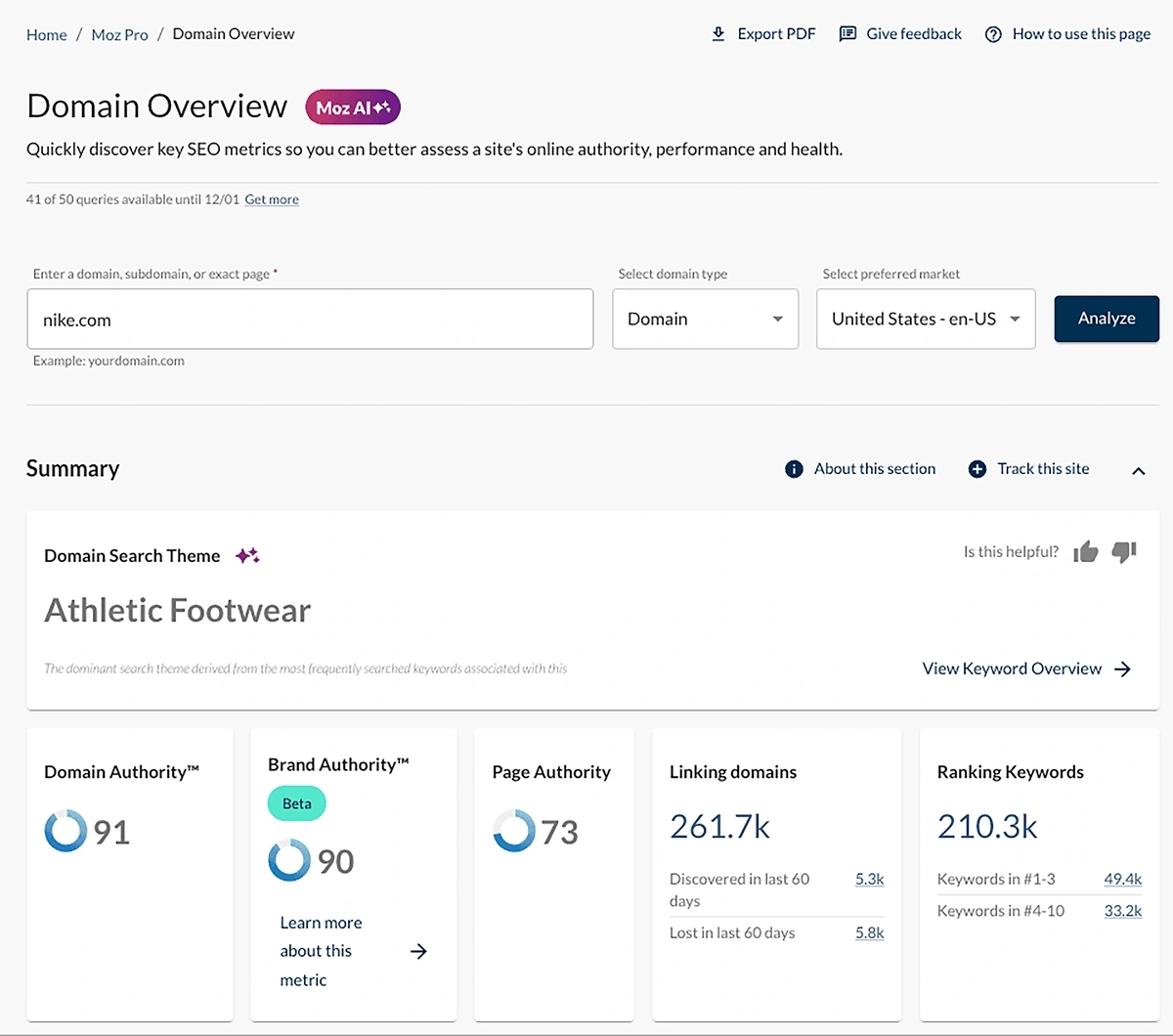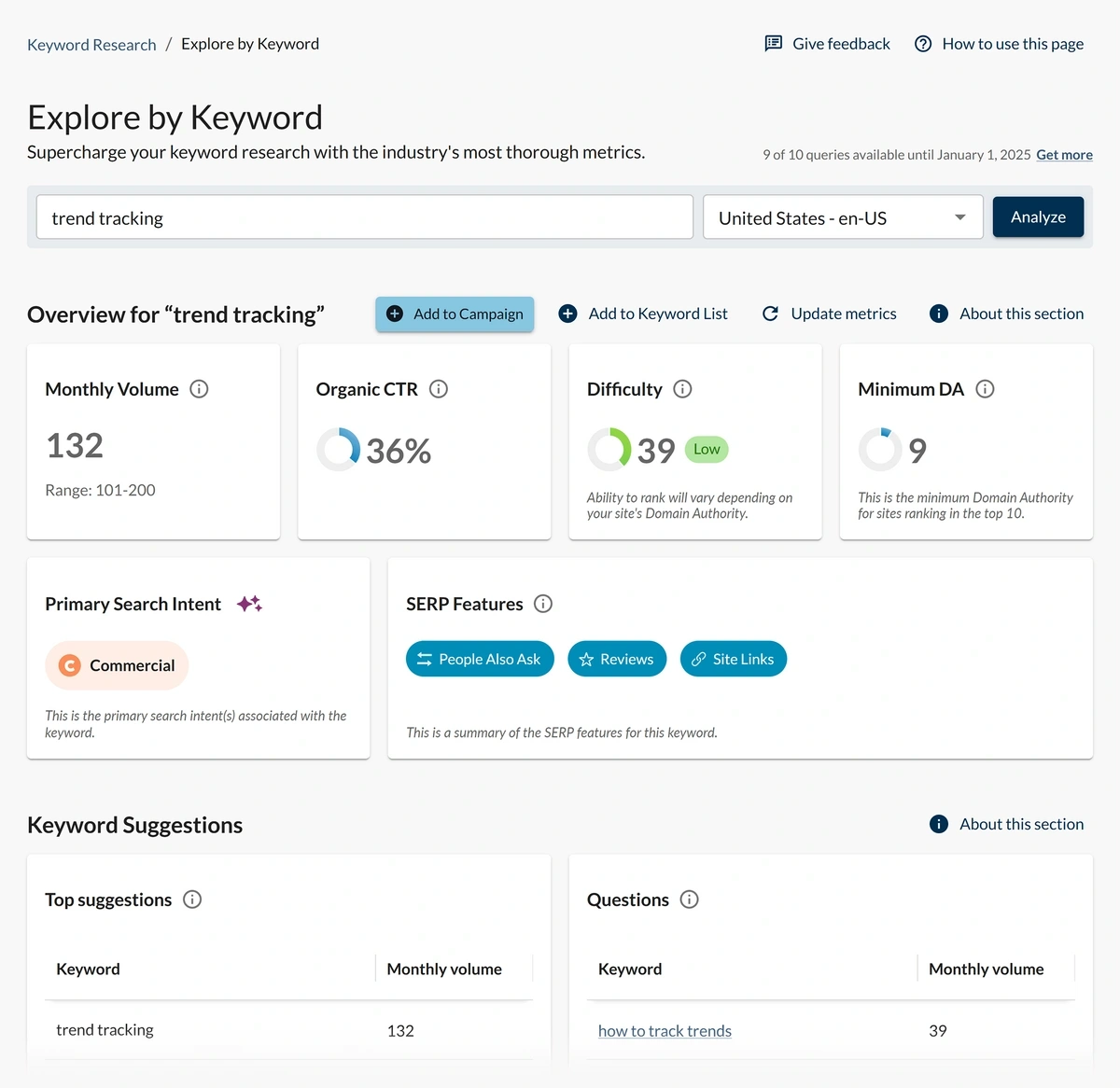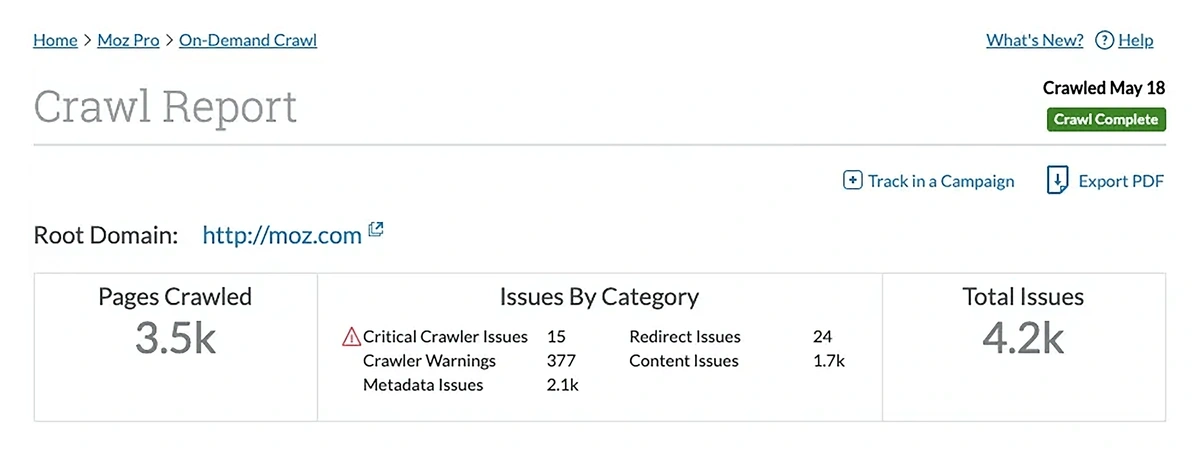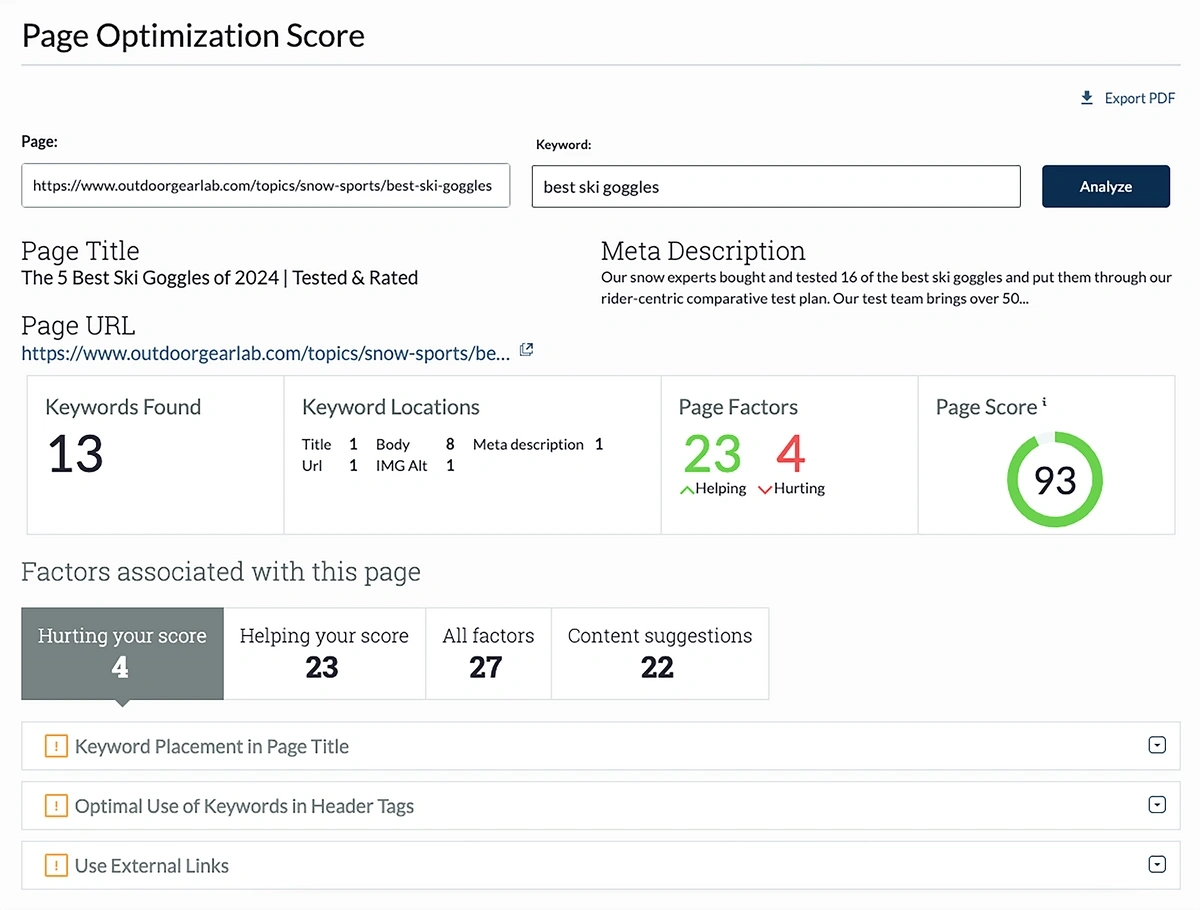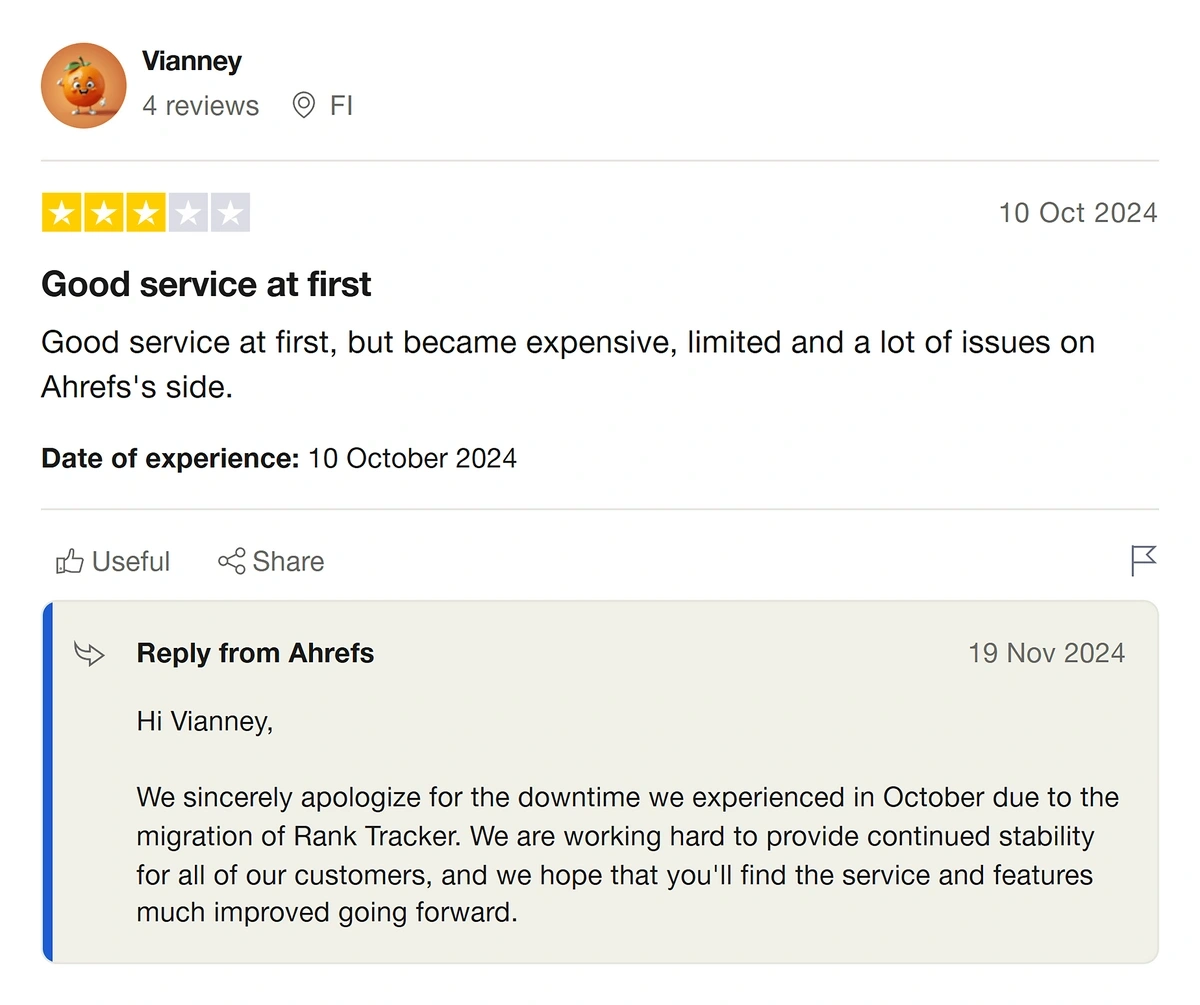
Ahrefs vs Semrush vs Moz: Key Differences and Features
Achieving competitive advantage in search rankings begins with SEO software.
The right tool can help you to:
- Discover your competitors’ backlink profile
- Reverse-engineer their advertising strategies
- Track their content marketing
Then, you can create a plan to outrank them and monitor the results.
I’ll compare Ahrefs, Semrush, and Moz on how well they support this process. And I’ll draw on my 10+ years of experience in SEO to see which of these global giants is the best fit for you.
Ahrefs vs Semrush vs Moz at a glance: The main difference between Ahrefs, Semrush, and Moz is their data depth and versatility. Ahrefs excels in backlink analysis and keyword research. Semrush offers a comprehensive digital marketing suite, including SEO, PPC, social, and content tools. Moz provides basic SEO features at a lower price point with more limitations.
Let’s dig deeper.
Semrush Overview
Semrush launched in 2009 as a single SEO product created by IT engineer Oleg Shchegolev.
Semrush quickly pioneered the delivery of actionable data for search engine optimization, attracting millions of users.
It’s now a world-leading SaaS company best known for providing a user-friendly way to boost online visibility.
In fact, Semrush has expanded to include tools for:
- Keyword research
- Competitor insights
- Backlink analysis
- PPC ad data
- Social media
- Content marketing
It helps you to create effective SEO and PPC plans that outmaneuver competitors.
Solopreneurs and agencies can use Semrush to create content plans, optimize pages, and monitor ranking results.
This can be done for any country or globally. You can research by local area or region, and even track ranking improvements from neighborhood to neighborhood.
It’s easy to generate or schedule white-label reports.
That’s just a small part of what you can do with Semrush.
“We used to dream of inventing a program to solve problems so complex that solving them could change the world,” Shchegolev said.
I’ve been using SEO tools for many years. Based on my experience, I can say Shchegolev has fulfilled his dream.
Build a winning strategy
Get a complete view of your competitors to anticipate trends and lead your market
Semrush: Top Features and Use Cases
We wrote about the most important features in our Semrush review. But let’s get an overview as a reminder:
- Keyword Research: This is the foundation of Semrush insights. Semrush has the most metrics for its keywords. For instance, it provides 45 SERP feature filters, many related to e-commerce.
- Competitive Research: You can analyze your competitors’ top keywords, backlinks, or PPC ads. You can use this information to create a plan to outperform them.
- Content Marketing: Semrush offers a surprisingly broad set of content marketing tools. Their SEO Content Template is useful for building briefs. And I’ve found their SEO Writing Assistant useful for optimizing content and checking readability.
- Advertising: Semrush also stands out with its detailed PPC data. This includes CPC and Competitive Density metrics. It goes further than other tools with Ads History, a PPC Keyword tool, and an AI-based ad creator. You can launch and manage Google and Meta ads from the Semrush dashboard.
Keyword Magic Tool
One of the most valuable tools in the Semrush package is the Keyword Magic Tool. I use it frequently for content planning.
Enter a keyword and click “Search.”
You’ll get a generous list of related keywords and metrics.
For instance, the Keyword Difficulty label tells you how hard or easy it is to rank for each keyword.
You’ll also see the estimated Search Volume (how often people search for that term monthly).
And you’ll get CPC (cost-per-click) data.
“Advanced Filters” help you to narrow your search according to Competitive Density, word count, SERP features, and number of results in the SERP.
Surprisingly, there are 44 SERP features to filter by, including
- People Also Ask
- Knowledge Panels
- AI Overviews
- Local packs
In contrast, Ahrefs only tracks 20 SERP features.
You can generate lists of keywords that are easy to rank for and signal buying intent.
That helps you attract qualified organic traffic to your site rather than browsers who aren’t shopping.
Exploding Topics Pro tip: Store owners looking for trending keywords and products can use Exploding Topics Pro alongside Semrush for more insights.
Enter a broad keyword, and you’ll get a list of related phrases displaying exponential growth.
Check the 1-5 year growth prediction of these trending keywords. Then, plug your selections into Semrush for analysis.
Keyword Gap
The Semrush Keyword Gap tool reveals which keywords your competitors rank in the top 10 of Google for, but you don’t.
With this data, you can craft strategies that funnel a share of your competitors’ customers to your website.
You’ll enter your domain and between 1-4 competitors.
For the example below, imagine you launched crockettcoffee.com this year. You add your domain and then stumptowncoffee.com as the competitor.
Both brands offer subscriptions for organic coffee.
Here, I used the “Keyword Difficulty” and “Intent” filters.
I wound up with keyword suggestions that are rated “Possible” to rank for and signal buying intent.
The diagram at top shows the small keyword overlap between these 2 brands.
Scroll down to see the list of keywords.
Here’s a small sample.
What stands out again are the filtering options.
Some of these describe the nature of the keyword/content gap.
For instance, I can filter the list to see:
- Missing: these are the keywords all listed competitors are ranking for, but you aren’t.
- Untapped: Closely related to “Missing”, these are the keywords you aren’t ranking for, but at least 1 competitor is.
- Strong: Keywords which you’re ranking higher than the competitors for.
The Keyword Gap tool gives you 15+ filters to make research easier.
Another notable feature: you can use Keyword Gap to analyze organic, paid, or PLA (Product Listing Ads) keywords.
PLA keyword analysis is not available in Ahrefs.
That means you can use the Keyword Gap tool to plan content or ads that compete with your rival’s top-ranking pages.
Local SEO
Semrush includes a complete set of local SEO tools.
This is a huge plus for small business owners (and agencies serving those entrepreneurs.)
Ahrefs doesn’t include local SEO tools, but the company indicates they’re “coming soon.”
Here’s what you get today with Semrush:
Listing Management: Type in the name of a local business, and you’ll get a convenient overview of the state of their directory listings.
Scroll down to see errors listed. For example, the tool can tell me if a company’s Facebook page is missing the business’s phone number.
You can fix listings and get new suggestions right from the Semrush dashboard.
Semrush provides access to over 150 business directories, more than Moz.
Map Rank Tracker: Tracking how a business’s rankings change in Google Maps is necessary for improved local SEO.
To retain clients, agencies and freelance marketers must show improvements across local neighborhoods.
Semrush delivers with its grid map.
The example above tells a compelling visual story of a marketing budget well spent.
Semrush also provides a Google Business Profile Optimization tool. You can manage online reviews from the dashboard.
Semrush Pricing
Semrush SEO toolkit plans start at $139.95/month for the Pro plan and $249.95/month for the Guru plan.
The Business plan is for large enterprises and costs $499.95/month.
The best deal is to pay annually rather than monthly.
Semrush also offers a 7-day free trial, which provides you with access to everything in the Pro or Guru plan. (Ahrefs discontinued its free trial. Moz offers a 30-day free trial.)
It's important to note that Semrush offers various additional toolkits apart from its core SEO toolkit, each priced differently.
These include Semrush Traffic & Market and social media toolkits and more such as:
| Semrush Toolkit | Base Plan | Pro Plan | Business Plan |
| Traffic & Marketing | - | $289/mo | - |
| Local | $30/mo | $60/mo | - |
| Content | $60/mo | - | - |
| AI | $99/mo | - | - |
| Social | $20/mo | $40/mo | $250/mo |
| Advertising | $99/mo | $220/mo | - |
For larger teams, there are also several agency add-ons. These include:
- “Premium visibility” on the Agency Partner program
- A client portal
- White-label reports
Ahrefs Overview
Founded by Ukranian entrepreneur Dmytro Gerasymenko, Ahrefs launched in 2011 as a backlink analysis tool.
Facing intense competition against Majestic SEO and Moz, Ahrefs made its tool free to attract new subscribers.
It worked. Marketers by droves were drawn to the precision and depth of data.
(You can read our review of today's versions of Ahrefs vs Majestic here.)
Today, Ahrefs provides one of the premier SEO software platforms, offering massive databases, fast speeds, and intelligent tools.
Whereas Majestic gets 315,000 monthly visits now, Ahrefs gets over 25 million.
The company created the 3rd top crawler in the world, right behind Google and Qualsys.
And Ahrefs’ Singapore-based datacenter houses one of the world’s fastest supercomputers, the Yep1.
The Ahrefs emphasis on innovation shows up in features like its AI Suggestions and Site Structure tools.
Marketers and solopreneurs will appreciate the extensive keyword research, backlink, and competitor data.
You can use this platform to:
- Plan competitive content
- Identify link-building opportunities
- Research PPC ads
- Track SEO progress
Ahrefs excels in keyword and page analysis. It also has strong technical audit tools.
Like Semrush, Ahrefs is intuitive and easy to use. This is why it attracts beginners as well as experienced marketers.
Over the years, Ahrefs has stuck to its core specialty: SEO. Unlike Semrush and Moz, it hasn’t branched out to other areas like social media management.
Ahrefs: Top Features and Use Cases
First, let’s consider a few standout features.
- Keyword Explorer: Get detailed keyword ideas and analysis. Sort by Keyword Difficulty, Volume, and Traffic Potential. Its database has 29+ billion keywords.
- Site Explorer: Its hub for competitor analysis. Discover your competitors’ strategies and performance. Spans organic and paid keyword data, top pages, and backlink profiles.
- Content Explorer: This database of 15+ billion pages allows you to search by topic and get SEO metrics for related pages. After entering the keyword, select use cases related to content marketing and link building.
Now, let’s look at some Ahrefs features in greater detail.
Content Gap
Ahrefs’ Content Gap tool helps you uncover profitable keywords your competitors are ranking high for but which you haven’t targeted.
These are called “untapped” keywords.
By running a Content Gap report, you can identify hidden opportunities for new content or ad campaigns that can attract some of your competitors’ traffic to your site.
This tool is similar to the Semrush Keyword Gap tool.
For instance, you’ll see:
- Volume
- Keyword difficulty
- CPC data
- Traffic
- Ranking positions
Both tools allow you to filter for competitor pages in the top 10 of Google results.
There are some minor and notable differences between these tools, though.
In both tools, after entering your domain and at least 1 competitor, you’ll get a visual summary of keyword overlaps at the top.
The Semrush visual is a Venn diagram. When you hover your mouse over it, the diagram displays select data.
The Ahrefs visual is in table form, with cells colored to indicate more (or less) keyword overlap.
While Semrush allows you to search by SERP feature in Keyword Overview and Organic Research, Ahrefs makes this filter accessible in the Content Gap tool.
So, for instance, you can narrow down untapped opportunities in Ahrefs by filtering for featured snippets only. If you also select an easy keyword difficulty rating, you could use this tactic to come in at position 1 or snatch the featured snippet from your competitor.
Conversely, the Ahrefs SERP features dropdown allows you to target competitor keywords in the top 10 but not appearing in the specific SERP feature you selected.
Ahrefs provides 20 SERP feature filters.
As noted above, Semrush provides 44 SERP feature filters, many related to e-commerce. But these are not included in its Keyword Gap tool – yet.
Link Intersect
Link Intersect is a unique way to discover backlink opportunities. It’s part of Ahrefs’ Competitive Analysis tool.
Instead of selecting keywords, you’d select referring domains or referring pages.
Ahrefs suggests using the tool to get links from listicles, which is an interesting use case.
Say you just launched an exotic type of organic coffee. You want to attract links to your blog post describing this product.
Specifically, you’d like to get it featured (with a backlink) on a high-traffic “best organic coffee” listicle.
You would go to the Competitive Analysis tool in Ahrefs to do this.
Click the Referring Pages tab at top. Then, enter your blog post URL in the “Not linking to this target” field.
Below, add a few competitors you’re sure would be included in that listicle.
The idea is to discover referring pages that link to those competitors but not to your article.
Click “Show link opportunities.”
You’ll get a nice visual summary at the top. Below that is a list of referring pages you can easily sort to pick the most valuable targets.
You can filter these by “dofollow” links, DR (Domain Rating) value, and Traffic.
Another use case recommended by Ahrefs is to discover business listings your competitors are listed in, but you aren’t.
Artificial Intelligence Features
One of Ahrefs’ most intriguing features is its AI Suggestions tool. This is found inside the Ahrefs Keyword Explorer.
AI Suggestions generates “uncommon seed keywords.” As Ahrefs explains, niche businesses often use the same seed keywords in their SEO research.
As a result, many players compete for the same keywords. This makes it harder for everyone to rank.
The goal isn’t just to find some low-competition keywords but to find those that will be genuinely useful for your niche.
Click the “Ask AI” field in the Keyword Explorer interface to use it.
You’ll see a drop-down menu specifying the types of keywords you want to generate.
These range from “challenges or pain points” to “products and tools.”
Above this dropdown, you’ll see tabs that allow you to search data from several search engines, including YouTube and Amazon.
This is a unique and creative way to find niche keywords that are easy to rank for.
For solopreneurs and marketers, the use cases become obvious.
For instance, the “challenges and pain points” option is an excellent starting point for blog topics.
After generating the AI uncommon seed keywords, you can analyze them in Keyword Explorer and choose those that signal buying intent.
Then, you can create how-tos showing how your product can solve your prospects’ identified problems.
Next, AI Search Intents is impressive as well. Some reviewers claim Ahrefs doesn’t offer Search Intent labels, but that’s false.
Like Semrush, their keyword metrics include the 4 standard labels:
- I for Informational
- N for Navigational
- C for Commercial
- T for Transactional
AI Search Intents discerns the intent behind keywords with multiple conventional intents, or non-obvious ones.
Add a keyword to the Ahrefs Keyword Explorer to use AI Search Intent.
Scroll down and click the “Identify Intents” button. The intents will appear on the right.
This is a quick way to determine winning content ideas for your keywords.
Also unique: Ahrefs’ SERP AI shows the percentage of traffic that goes to each intent associated with a single keyword.
Ahrefs Pricing
Ahrefs plans start at $129/month for the Lite version and $249/month for the Standard.
The Advanced plan, at $449/month, is designed for in-house marketing teams. And the Enterprise plan starts at $1499/month.
You’ll get 2 free months on any plan if you pay annually.
Ahrefs doesn’t offer a free version or a trial, but they do say they’re interested in “on-demand trials.” I take that to mean if you’re a serious buyer, you can reach out and request a trial.
They also offer a $29 plan for beginners.
Moz Overview
The ascent of Moz is one of the more fascinating stories in software history.
Founded in 2004 by Rand Fishkin and his mother Gillian Muessig, Moz began as an online community for those interested in the nascent field of SEO.
This led to a lucrative consulting business and the development of software tools.
In 2018, Fishkin exited Moz to found SparkToro. And in 2021, Moz was acquired by iContact.
Today, Moz is the budget alternative for those seeking a well-rounded SEO platform. As of May 2025, it gets 1.7 million visits per month.
With Moz, you can do keyword, backlinks, and competitive research. You’ll get all the standard SEO metrics, like keyword difficulty and search volume.
Local SEO tools are available, along with a few content optimization features. Plus, you can do site audits.
Moz seems best suited to solopreneurs and small teams.
Moz: Top Features and Use Cases
Here are a few features Moz is known for.
- Local SEO: This add-on provides listing management, a “GeoRank” map grid, Google Business Profile optimization, Review management, and social media tools.
- Link research: Analyze backlinks, anchor text, and compare backlink profiles.
- Domain Overview: Features domain, brand, page authority scores, linking domains, ranking keywords, and more.
Now, let’s look at some of Moz’s popular tools in detail.
Domain Overview
The Moz Domain Overview provides a reasonably helpful of a domain's key search performance and backlink metrics. But it gives you no traffic estimate, which is a glaring omission.
While traffic is likely to lose much of its importance as a metric once Google search transitions completely to AI Mode, it's still the metric that most marketers like to compare domains by.
Apart from that, you'll get these helpful stats on the Moz Domain Overview screen:
- Domain Authority
- Brand Authority
- Page Authority
- Linking domains
- Ranking keywords
A domain authority score is an approximate measure of the likelihood that a website’s pages will rank well.
Most SEO platforms, like Semrush and Ahrefs, include this metric. And Moz was the first company to pioneer it.
Each software platform calculates domain authority differently.
Enter a site into the Moz Domain Overview, and you’ll see the corresponding domain authority score on the left.
This score is related to linking domains and ranking keywords.
You can use this score to prioritize domains when you’re working on getting more backlinks. Generally, the higher the site’s domain authority score, the more SEO value its backlinks will confer.
As shown in the image above, Moz has also created proprietary Brand Authority and Page Authority metrics.
I like that it categorizes a domain based on the topics it talks about or products/services it offers. It's a simple but effective indicator to have when analyzing different sites.
From the Domain Overview, you can click to track the domain you’re analyzing or access its Keyword Overview.
Limited filtering by country: You can filter Domain Overview results by country. However, Moz’s options are limited to the U.S., the U.K., Australia, and Canada.
By contrast, Semrush Domain Overview offers data from 190 countries and regions.
So, if you have a global store or target countries beyond Moz’s list, choose Semrush or Ahrefs.
On-Demand Crawl
For agency marketers, conducting a site audit before a meeting with a prospective client is a must.
Site audits uncover technical SEO issues and categorize them. This will give you an idea of the scope of problems to be resolved.
Moz’s On-Demand Crawl will audit a root domain or subdomain. This audit covers up to 3,000 pages.
In the report, you’ll see technical SEO issues grouped according to category, such as:
- Missing h1
- Title too long
- Missing description
Need to analyze more than 3k pages? You can select “Track in a Campaign” for a particular domain in the On-Demand Crawl overview page.
The number of campaigns you can run depends on your subscription. For instance, the Starter plan ($39/month) allows for 20k crawled pages per month.
Compare this to the Semrush Site Audit feature. It allows you to crawl up to 20,000 pages per audit.
In my experience, the Semrush and Ahrefs site audit tools are more user-friendly than Moz’s.
On Page Optimization
Content optimization tools can benefit marketers or solopreneurs looking for ways to boost the ranking of important pages.
Add a web URL to Moz’s On Page Grader, and you’ll get an analysis with recommendations for improving the page.
In the example below, we added OutdoorGearLab.com’s review: “The 5 Best Ski Goggles of 2024.”
For the target keyword, I entered “best ski goggles.”
As you can see, Moz provides “Page Factors” that are “Helping” or “Hurting.” And there’s a Page Score.
I found the results to be underwhelming.
- The 1st recommendation is to move the target keyword (“best ski goggles”) closer to the front of the <title> tag.
- The 2nd recommendation is to use the keyword at the beginning of an <h1> tag.
In other words, Moz doesn’t like the words “The 5” being placed before “Best Ski Goggles of 2024.”
That’s a questionable bit of advice but a popular recommendation in lower-level SEO tools. Besides, the OutdoorGearLab review is already ranking #1 for its keyword.
The rest of the recommendations seemed bland. On this front, I'd be inclined to look at Moz alternatives.
Given Moz’s legendary place in SEO software history, I’d like to be more enthusiastic about its content strategy tools, but I found them disappointing.
Moz Pricing
Moz comes in as the budget option. The Starter plan is $49/month, and the Standard is $99/month.
The Medium plan goes for $179/month, and the Large is $299/month.
You can save 20% by paying annually.
Like Ahrefs and Semrush, the plans differ by how many tools you can access. And like Semrush, Moz limits plans by data usage – in this case, by the number of tracked keywords/month and pages crawled.
Moz offers the most generous free trial of the 3. You can test it for 30 days.
Ahrefs vs Semrush vs Moz: Key Differences
It’s difficult to say which tool is “best” out of Ahrefs vs Semrush vs Moz.
These tools have many similarities, but some are minor. And each platform is evolving.
Only you can decide which interface you prefer and which features you need the most. That said, here are some noticeable differences.
Database Sizes
The number of keywords and backlinks that are tracked in each tool are different. Moz stands out for having a much smaller keyword database compared to Ahrefs and Semrush.
Note: these database sizes are self-reported.
| Software platform | Backlinks database | Keywords database |
| Semrush | 43 trillion links | 25.3 billion |
| Ahrefs | 35 trillion links | 28.7 billion |
| Moz | 45.5 trillion links | 1.25 billion |
Keyword Research Capabilities
All 3 platforms reviewed here offer domain authority, volume, keyword difficulty, intent, position tracking, and SERP feature metrics.
AI Overviews: Semrush and Ahrefs lead with their versions of Google AI Overviews (AIO) metrics. Here, it’s worth reading Brodie Clark’s take on subtle differences.
Google AI Overview (AIO) tracking in Semrush vs. Ahrefs.
— Brodie Clark (@brodieseo) October 16, 2024
I'm a fan of both tools, but there are core differences worth highlighting.
Semrush launched AIO tracking on September 3rd and Ahrefs on October 7th – with the Ahrefs database still fully populating.
Here are the main… pic.twitter.com/x6FZyvHdcD
Metrics, Filters: Overall, Semrush appears to have the most metrics and filters. For instance, it provides 44 SERP feature filters, compared to Ahrefs’ 20.
In sum, Ahrefs and Semrush offer the best keyword research tools.
And both dwarf Moz with their massive keyword databases.
Local SEO
Semrush and Moz offer local SEO tools. Ahrefs doesn’t, but they say local SEO tools are “coming soon.”
Semrush vs Moz: Semrush offers access to more business directories. And many of its 44 SERP feature filters are related to local SEO and e-commerce.
Content Marketing
Semrush is the king here, with a full suite of superb content marketing tools. Moz’s On-Page Grader doesn’t come close to the usefulness of the Semrush SEO Writing Assistant.
I know some content marketers value the content update tracking in Ahrefs.
But when working through my SEO copywriting checklist, I think the Semrush tools are superior even to pricey standalone products like Clearscope.
Competitor Analysis
Semrush and Ahrefs shine with their multi-faceted competitor analysis tools.
The massive databases that these 2 giants own gives them a distinct advantage over Moz.
The exception is in the size of their respective backlink database. While Moz claims to have the largest of the 3, Ahrefs and Semrush outperform it on the analytics side.
Ease of Use
This comes down to personal preference, to some degree.
I think Ahrefs and Semrush are the winners here, with Semrush having a slight edge. There is a learning curve with Semrush, but it’s not a major problem.
Some of Moz’s interfaces are user-friendly and ideal for beginners. Others seem too cluttered.
AI Tools for Website SEO
Just like the difference between grape soda and fine wine, SEO AI tools can be disappointing or impressive.
Ahrefs and Semrush lead with their use of AI. Both have AI features that are helpful.
I see Semrush as having an edge given their thoughtfully calibrated use of AI in their content marketing tools. And I think use its personalized keyword difficulty score (PKD) almost daily.
Social Analytics
Both Semrush and Moz offer social media tools, while Ahrefs does not.
Again, this is a convenience factor. If you need social media tools to support mission-critical campaigns, you may find a standalone social media tool is more helpful.
Pricing, Account Limits, Add-ons
All 3 software products have somewhat complicated specifics about how many reports, crawls, or credits you can use monthly.
Reach out to a customer rep to ensure the plan you pick (and price point you prefer) will be sufficient for you.
And pay attention to whether tools you need (like local SEO) are add-ons that incur an additional fee.
Obtaining, storing, and serving data can be expensive, so there are some limits. Ahrefs has a credit system on its lower-priced plans, and it can be restrictive.
The credit system comes up a lot in its Trustpilot reviews.
PPC Analysis
Semrush is the more comprehensive PPC platform.
With Ahrefs and Semrush, you can view your competitors' ads, ad URLs, and paid keywords. Plus, you can see which ads performed the best.
The Semrush Advertising Dashboard adds a complete set of PPC tools and PLA (product listing ads) keyword analysis.
Choose the Best SEO Tool for Your Needs
Ahrefs and Semrush are premier SEO software platforms, with Semrush being more comprehensive.
Here’s my take on the differences.
- Ahrefs impresses with its focus on precision SEO tools like backlinks analysis. It’s an excellent choice for the most demanding SEO professionals.
- For only $10 a month more, Semrush goes beyond SEO to include many superb digital marketing tools in its plans. This will appeal to agencies, solopreneurs, and content marketing teams.
- Moz, the budget option, seems to be significantly behind the two leaders, with a content gap tool still in beta. But reviews suggest small teams value Moz. You can check out our Moz vs Ahrefs head-to-head comparison here.
That’s my summary of Ahrefs vs Semrush vs Moz. The right choice for you is the one that fits your goals and your budget.
Still on the fence? You can try Semrush free for 7 days and discover the difference for yourself.
Stop Guessing, Start Growing 🚀
Use real-time topic data to create content that resonates and brings results.
Exploding Topics is owned by Semrush. Our mission is to provide accurate data and expert insights on emerging trends. Unless otherwise noted, this page’s content was written by either an employee or a paid contractor of Semrush Inc.
Share
Newsletter Signup
By clicking “Subscribe” you agree to Semrush Privacy Policy and consent to Semrush using your contact data for newsletter purposes
Written By


Sherrie Gossett has a knack for uncovering hidden trends and opportunities that others overlook, drawing on her extensive experien... Read more


